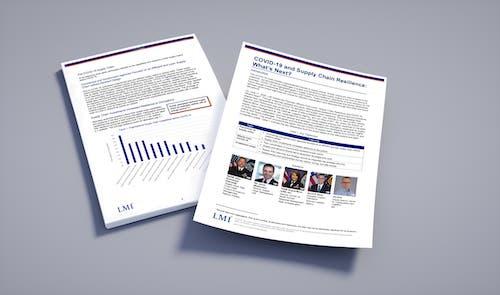
How Value-Based Care Can Improve for Patients, Providers and Payers Post COVID-19
Health, Logistics, Lifecycle Management & Modernization, Performance Optimization, Health Policy Transformation, Digital Solutions, Data & AnalyticsOver the past several years, the U.S. government transformed the country’s health system through the Affordable Care Act (ACA)—a paradigm shift that enabled the government to implement value-based care and purchasing programs, improving patient outcomes, supporting healthier populations, and creating new avenues for cost savings.
Value-based care, or “pay for performance” care, encourages healthcare services that improve individual and population health outcomes while discouraging those that don’t. It links payments for services with quality for patients, rewarding providers for improved care delivery that can lower medical spending and improve health outcomes.
The push toward value-based care allowed the Centers for Medicare & Medicaid Services (CMS) to implement payment reforms on the basis of value. The Trump administration, while distancing itself from the more salient features of the ACA, ultimately continued to build on that effort around programs such as the Medicare Shared Savings Program. There is every indication that President Biden and his team will continue to emphasize the push toward value-based care over the next four years.
The federal government has an opportunity to build on lessons learned over the past decade and during the pandemic to improve value-based care requirements, enabling better access to care for rural and underserved communities, coordination of care, prevention, expanded telehealth, and innovative treatments and care delivery protocols. Other desired outcomes include greater support for home health services, patient engagement, and satisfaction in care for patients and providers.
Adjusting Metrics To Reflect What Works
The shift to value-based care has produced myriad new data points for healthcare stakeholders in the federal government. Through programs like Medicare and Medicaid, the government has tested value-based care quality indicators and collected data around patient outcomes and cost savings. In many cases, the results have been positive. At the start of 2021, CMS revealed that the 541 accountable care organizations participating in its Shared Savings Program realized $1.19 billion in total savings in 2019.
Still, hundreds of quality measures have been developed over the past 10 years to assess providers, but not all of them are relevant or work as well as desired. In combination, they may even dilute incentives or counteract one another. Stephanie Frilling, a senior policy consultant with LMI, says that consolidating these clinical outcome and reporting measures could result in more reliable data and ease the reporting burden for providers.
“Right now, there are a lot of different opportunities for the data to affect providers in counterproductive ways,” Frilling says. “Say, for example, that you have an elderly ESRD patient who decides to withdraw from dialysis. Limiting weekly dialysis sessions would support patient care objectives, but the provider would be left reporting poor clearance and may earn a reduced quality score or penalty. Providers should be able to opt out of reporting measures that are in conflict with patient-centered care goals and wishes.”
Incentivizing Improvement and Reducing Participant Burden
In other cases, providers in small towns or rural areas may lack the patient and provider populations to meet national thresholds for some programs or indicators. If these providers feel like they can’t be competitive with regard to quality performance within these models, they may be less willing to participate in value-based care. Frilling says that refining the indicators to reflect improvements in patient outcomes could make it easier for small providers to move to value-based care.
John Allison, a healthcare consultant with LMI, agrees. He noted that changes to program parameters can unintentionally create additional implementation burdens on providers. Larger providers typically absorb many of these changes, but frequent shifts put a disproportionate strain on resources for small and medium-sized organizations.
“We’re seeing the onset of change fatigue from providers due to frequently changing rules in the healthcare space,” Allison explains. “From the standpoint of providers, it’s hard to plan and forecast if the rules of the game are unclear or frequently amended.” He further notes, “This can have a disproportionate impact on smaller organizations that don’t have the resources to manage these changes well.”
Allison also notes that the boom in value-based care has left some providers with competing incentives and reporting metrics. “Small providers play a critical role in their communities, not in the least because they are already there. Finding success in these communities, however, often doesn’t look the same as it does in areas with a larger patient population,” he explains. “Designing a program that accommodates widely different patient populations with vastly different market constraints is challenging. As more new models are tested, the more the market for value-based care has the opportunity to segment.”
In 2019, CMS began to retire quality metrics that were burdensome for providers to report and no longer aligned with the administration’s goals. The pandemic temporarily shifted the focus on these efforts, but there is an opportunity to refocus on consolidating metrics as the rate of COVID-19 vaccinations has increased. Allison and Frilling agree there is more to do to streamline program participation in the value-based care space without sacrificing data gathering, reducing cost savings, or diminishing patient outcomes.
Sharing the Risk: Making Rules Work for All Participants
In addition to updating program metrics, stakeholders should consider how to improve the model structure of value-based programs. In the Medicare Shared Savings Program, the government is exploring how to ensure that providers share in the risk of services that go beyond what’s expected or appropriate. The ACA introduced a one-sided model option to encourage participation from providers. These one-sided models offered upside incentives only, with no risk in the event of poor performance. The Trump administration introduced sweeping changes to the Shared Savings Program that limited participation in these one-sided models.
Allison notes that while the goal of moving providers to two-sided risk is a noble long-term aim, there is debate over whether many of today’s providers are ready to handle risk. “Even if you aren’t participating in downside risk, you might see losses from participating in a value-based care model. There are costs to restructuring your business model and hiring staff members to help you comply with the often rigorous requirements of participating in these programs.” The new administration has an opportunity to determine whether the rules are achieving the desired outcome.
An Accelerated Future Into Value-Based Care
For providers, the pandemic has accelerated the shift toward value-based care. Providers were forced into extreme patient prioritization and had to pivot to new technologies like telehealth to keep patients safe. The Trump administration expanded access to telemedicine in Medicare and Medicaid during the pandemic through executive orders. Going forward, federal stakeholders and providers will have a deeper understanding of how to use telemedicine. That understanding can inform updates to value-based models to standardize virtual healthcare delivery with positive patient outcomes and efficiency in mind.
The pandemic has also highlighted the need for federally coordinated patient data collection. “Most researchers will tell you that the COVID-19 deaths number, for example, is probably undercounted,” explains Frilling. “States collect and report data differently, which leads to less reliable data. A unified data-collection standard coordinated at the federal level would improve reliability—not just for pandemic deaths but across metrics.” With clean data, Frilling adds, stakeholders can accurately model outpatient outcomes and care performance.
If data collection and program compliance can be streamlined and improved over the next few years, both Frilling and Allison suggest that policymakers and providers could understand their return on investment for value-based care.
“ROI can be tricky to measure when you are considering non-monetary variables such as healthier populations and improved patient outcomes,” Frilling says. “That’s why it is crucial to have effective population health ROI models. Once you have that, you can see the true value of healthcare delivery reform over time. Those data will incentivize providers and improve outcomes throughout the healthcare system.”
Until we find effective ways to solve the issues providers and healthcare organizations face in their value-based care adoption, we are unlikely to achieve large scale transition. Providers, healthcare executives, and organizations still face head winds in evaluating the level of investment appropriate to achieve care transformation and allow for continued positive financial returns.


Health & Civilian
Our subject matter experts and advisors have a broad knowledge base across the spectrum of federal health and civilian agencies to enable excellence in execution that transcends boundaries.





































































































































































